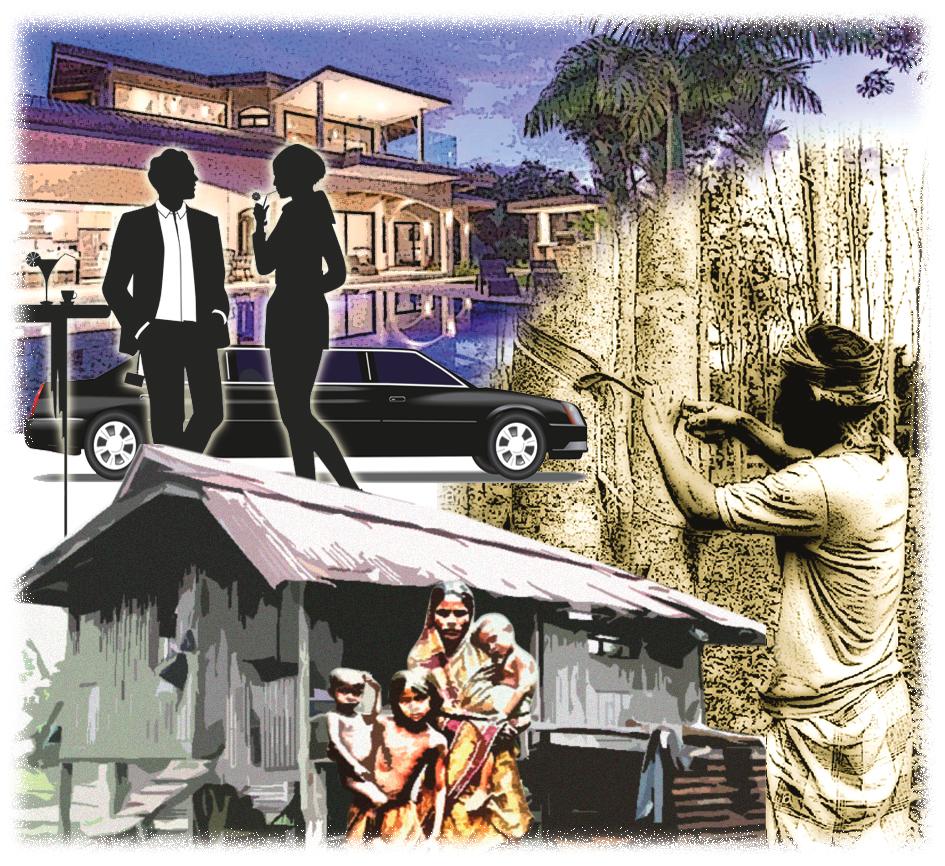BY JEFF YONG
WHEN I was in primary school, the geography text books told me that tin, rubber, pineapple and coconuts were the mainstays of our country’s economy.
The books didn’t even talk about palm oil, crude oil, petroleum, or even timber. There was not even a car industry to talk about.
Back then, I also had glimpses of interesting pictures in magazines showing British rubber magnates in their finery and flashy limousines. Local tin tycoons would be surrounded by pretty women.
No wonder there’s a Concubine Lane in Ipoh, the capital of Perak (the Silver State), where tin once held sway.
Being the young simple me, I thought to myself: “Wow, the latex that flowed out from rubber trees and tin we dug from the ground were making the country rich!”
Then I chanced upon a magazine that showed workers in these industries. I was shocked at their attire. How different they were from the bosses!
I then consoled myself that these workers had to dress like that because the work didn’t allow one to dress as if he was attending a royalty’s birthday party!
Several years later, I chanced upon the squalid living conditions of the workers on the outskirts of Kuala Lumpur. I was stunned.
It was a far cry from where their bosses lived in Bukit Damansara or Bukit Tunku! Something was wrong somewhere.
More than a century since the existence of the rubber industry in this country, the owners are still talking about losing profits and losing competitive advantage. Thus, the need to keep the wages of workers low.
I had read from an old magazine that rubber tappers were paid between RM3.20 and RM3.60 a day about 60 years ago. A pittance, if you really think about it.
A rubber tapper had to tap some 200 to 300 trees a day. Therefore, it meant these workers were being paid just one sen for each tree they tapped!
I remember the long and heated debates some years back on whether to give rubber tappers a monthly wage. I don’t know what’s the latest situation on this proposal.
Why do Malaysians need an industry that lives by keeping its workers poor?
Malaysia exports some RM15 billion worth of rubber each year. At the lowest end of the rubber food chain are the ordinary rubber tappers. They continue to suffer although they’re the ones bringing out the latex.
Two years ago, I visited a tin museum in Ipoh. What I read from the posters shocked me. I discovered that the lowest rung of workers in tin mines usually never lived beyond their 45th birthday! Supervisors had a longer lifespan. The work was that hard.
Fast forward to 2019, and we now have a different situation. Foreign migrant workers are taking away many of the menial jobs.
But not every Malaysian who goes to school here can be a high flier. There are those who have to start from the bottom.
One trade unionist opined that the debate on minimum wage would never end. Workers would want a decent wage to provide sufficient purchasing power for a basic standard of living while employers would reject any raise because of their fear of higher business costs and lower competitiveness.
I like one political strategist’s argument that there’s a big difference in paying a monthly wage of RM3,000 (many are not even there yet!) to a foreigner and a local.
To a foreigner, he or she will spend on food, accommodation and perhaps entertainment, with the bulk remitted to the home country.
But if that wage were to be paid to a local, the money could be spent on big ticket items with positive multiplier effects: houses, cars and even education.
It pays for us to seriously ponder on this for our well-being. We also need to look into the mirror with regard to our skills and productivity.
Jeff Yong, after making his mark in the twisty maze of mainstream journalism, has finally decided to enjoy what he does best – observing the unusual and recounting the gleeful. He can be contacted at lifestyle.borak@gmail.com.









